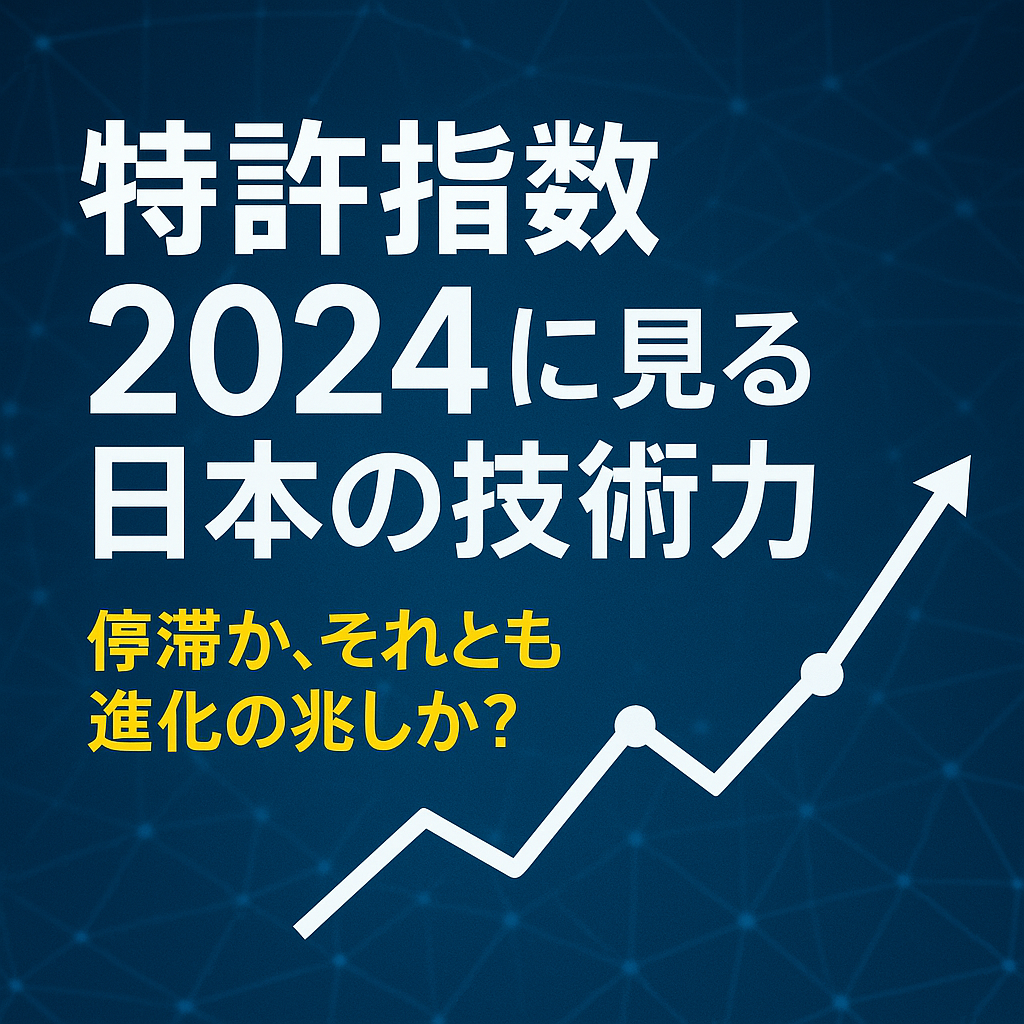Introduction
On March 30, 2025, the European Patent Office (EPO) released the Patent Index 2024. In the report, Japan maintained its position as the third-largest filer of European patents, following the United States and Germany. With a total of 21,062 applications, Japan accounted for 10.6% of all filings. Although this represents a 2.4% decrease compared to the previous year, Japanese companies and inventors continue to play a crucial role in driving innovation within the European market.
This news is more than just a release of figures—it serves as a significant signal closely tied to the current state and future direction of Japan’s technology strategy. This article explores Japan’s strengths, challenges, and future prospects as reflected in recent patent filing trends.
The Decrease in Total Filings—What Does It Mean?
The 2.4% year-on-year decline in Japan’s patent filings to the EPO is a noteworthy warning sign. While global patent filings have remained stable at high levels, why is Japan seeing a slight drop?
One possible explanation is the maturation of the domestic market and a shift in corporate R&D investments. There may be a growing emphasis on short-term profitability, coupled with workforce constraints brought on by an aging and shrinking population.
Japan’s Strengths and Growth Areas by Sector
Despite the overall decrease in total filings, some sectors have shown clear growth. Notably, the following three areas stand out:
- Battery Technology: Up 20% year-on-year
Panasonic, Toyota, and Prime Planet Energy & Solutions are leading the charge in this sector, showcasing Japan’s competitiveness amid the shift toward electric vehicles (EVs) and renewable energy.
- Transport Technology: Up 3.7% year-on-year
Toyota stands out, ranking 4th globally in automotive technology and 2nd in electric propulsion technologies.
- AI and Computer Technology: Up to 20% growth in specific subfields
With Sony at the forefront, Japanese companies are making aggressive strides in AI-related sectors in Europe—an indicator of transformation in Japan’s industrial landscape.
Regional Data Reveals the Hubs of Japanese Innovation
Tokyo recorded 11,592 filings—an outstanding figure not only within Japan but also globally. Excluding California, Tokyo ranks as the second-largest region in the world in terms of filings. Osaka and Aichi follow, clearly illustrating the concentration of innovation in urban areas.
This concentration underscores the importance of open innovation and inter-regional collaboration. Conversely, it highlights the need to improve innovation environments in rural areas—a significant challenge moving forward.
Global Comparisons and Future Strategy
While Japan may be slightly lagging behind countries like the U.S., China, and Germany in terms of quantity, Japanese companies still demonstrate strong qualitative performance. In critical future industries such as environmental technology, next-generation mobility, AI, and robotics, Japan maintains a notable presence.
The key going forward is how Japan can extend its domestic technological capabilities to global markets and align them with intellectual property strategies. The focus must expand beyond R&D to include comprehensive “intellectual asset management,” including strategic patent portfolio oversight.
Conclusion
Patent filings—quantifiable indicators of innovation—can often reflect a nation’s overall technological strategy. The Patent Index 2024 shows that Japan remains a technological powerhouse, but it also raises the question of whether it can maintain that status in the years to come.
Rather than fixating on the decline in numbers, it is crucial to recognize how Japan is evolving in terms of quality and sectoral strengths. This perspective will be essential for future discussions on the nation’s innovation trajectory.

